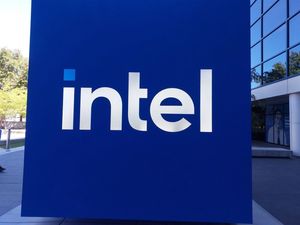
October 28, 2025, marked a notable divergence in the S&P 500, as the Consumer Staples sector experienced a 0.33% decline, standing out as one of the few laggards on a day when growth-oriented sectors celebrated significant surges. This underperformance hints at a broader rotation of investor capital, suggesting a collective shift towards more cyclical or high-growth areas of the market, fueled by an optimistic sentiment for economic expansion and innovation. The sector's struggles are not new; it was also the sole sector to post a loss in the third quarter of 2025, underscoring a persistent trend of investors moving away from defensive plays.
The S&P 500 itself demonstrated robust health on October 28, 2025, continuing its upward trajectory and setting new record highs, driven by strong third-quarter earnings, cooling inflation, and sustained Federal Reserve easing optimism. Technology, Communication Services, and Consumer Discretionary sectors led the charge, with AI-driven advancements particularly fueling gains in tech and semiconductor stocks. This 'risk-on' environment contrasts sharply with the cautious appeal of Consumer Staples, which provide essential goods regardless of economic conditions. The sector's decline, therefore, signals an increasing investor confidence in the broader economy, lessening the need for traditional safe havens and prompting a reallocation of funds into segments promising higher returns.
The Great Rotation: Consumer Staples in the Crosshairs
The 0.33% decline in the Consumer Staples sector on October 28, 2025, while seemingly modest, is symptomatic of a larger trend. For the entirety of Q3 2025, the Consumer Staples sector was the only one among the S&P 500's segments to post a loss, with declines ranging from 2.6% to 3.21%. This stark underperformance contrasts sharply with the gains seen across nearly all other sectors, particularly the high-flying Technology and Communication Services, which have been buoyed by the accelerating Artificial Intelligence revolution.
This phenomenon is a clear manifestation of "investor capital rotation"—the systematic movement of investment funds from one asset class or sector to another as market conditions evolve. In the current "risk-on" market environment of late 2025, investors are shedding defensive assets like Consumer Staples, which are traditionally favored during economic uncertainty, in favor of growth and cyclical opportunities. Factors contributing to this shift include receding economic worries, anticipated interest rate cuts by the Federal Reserve, and the allure of innovative sectors. Even concerns about the impact of GLP-1 weight-loss drugs on consumption of certain food and beverages have weighed on the sector. Initial market reactions confirm this shift, with capital flowing into "beaten-down, high-dividend-paying stocks" and a broader movement from inflated growth sectors towards tangible assets, though the primary beneficiaries remain growth-oriented technology and cyclical sectors.
Winners and Losers: A Tale of Two Market Segments
The ongoing capital reallocation has created clear winners and losers across the S&P 500. Companies within the Consumer Staples sector, which produce essential goods, are feeling the pinch. Major players such as Procter & Gamble Co. (NYSE: PG), The Coca-Cola Company (NYSE: KO), PepsiCo, Inc. (NASDAQ: PEP), Walmart Inc. (NYSE: WMT), and Costco Wholesale Corporation (NASDAQ: COST) are navigating headwinds. While some, like Coca-Cola and PepsiCo, reported upbeat Q3 earnings partly due to pricing strategies, others, particularly PepsiCo, have faced significant drops in net income driven by weak demand and volume declines in key markets like North America and China. Their stock prices, while typically less volatile, have seen relative underperformance as investors seek higher returns elsewhere. Earnings are under pressure from weak demand, inflationary input costs (e.g., cocoa, coffee), and increasing wages, forcing companies to find a delicate balance between price increases and market share retention. Strategically, these companies are focusing on supply chain optimization, sustainable practices, product innovation, and potentially expanding into emerging markets or pursuing share buybacks to maintain shareholder value.
Conversely, growth-oriented sectors are reaping the benefits of this capital influx. Technology, particularly companies involved in Artificial Intelligence and cloud computing like Nvidia (NASDAQ: NVDA) and Microsoft (NASDAQ: MSFT), is a primary beneficiary. Lower discount rates, driven by anticipated interest rate cuts, enhance the valuations of these growth stocks, making them highly attractive. Real Estate and homebuilders are also seeing a boost as lower mortgage rates stimulate housing demand. Financials and financial innovation, including fintech, are experiencing strong gains, benefiting from increased loan volumes and investment banking activities. Consumer Discretionary companies are thriving as consumer confidence grows and spending on non-essential items increases. Furthermore, Emerging Markets, Industrials (e.g., aerospace, reshoring initiatives), and Energy (due to rising global demand and limited supply) are all attracting significant capital, signaling a broad market appetite for higher growth and cyclical recovery.
Broader Implications: Economic Shifts and Historical Echoes
The current sector rotation is deeply embedded in broader economic and market trends of late 2025. Inflation, though moderating from its 2022 peak, remains a concern, with "sticky inflation" in sectors like housing and healthcare. While global inflation is projected to decrease, potential tariffs, particularly on imports from China and Europe, could re-ignite input costs. Interest rates, following a 25 basis point cut in September 2025, are anticipated to see further cuts by the Federal Reserve, signaling an end to the era of ultra-low rates and fostering more disciplined capital allocation. Consumer spending, while resilient and driving Q2 2025 GDP growth, is expected to slow in late 2025 and into 2026, with lower-income households feeling the strain more acutely. This complex interplay of moderating inflation, anticipated rate cuts, and cautious consumer spending is driving investors away from defensive sectors towards value and cyclical equities.
The ripple effects extend to related industries. The packaging industry faces stabilizing material prices but ongoing pressure from rising costs and political uncertainty, leading to a focus on sustainability, material reduction, and adapting to e-commerce demands. The logistics industry is grappling with economic uncertainty, higher fuel and labor costs, and geopolitical tensions, pushing for technological advancements (AI, robotics) and supply chain resilience through reshoring. Regulatory implications are also emerging, with increased scrutiny on financial stability, government tariffs influencing trade, and stricter sustainability regulations impacting industries like packaging and logistics. Historically, similar periods of sector rotation have occurred, such as the 1970s stagflation era which saw a shift to value and commodity-linked assets, and the post-2008 era of ultra-low rates that favored growth stocks. The current environment marks a distinct departure from the latter, echoing past shifts where macroeconomic dynamics and evolving Fed policy dictate investment flows.
What Comes Next: Navigating a Shifting Landscape
In the short term (2025-2026), the Consumer Staples sector is expected to return to more normalized dynamics against a stable economic backdrop, with consumer demand, employment, and real wage growth remaining healthy. Anticipated Federal Reserve rate cuts could provide a generally positive outlook for the sector, with stock picking becoming crucial to identify undervalued companies. However, 2025 is also poised to be challenging, with continued volatility and fundamental pressures on consumers, making volume/unit growth a key driver for outperformance as inflation and pricing power wane. Geopolitical dynamics and a strong US dollar could impede international growth, and potential policy changes, including tariffs and regulations, remain wild cards.
Long-term projections for Consumer Staples are shaped by enduring trends such as solidified post-pandemic consumer behaviors (digital reliance, at-home activities), a strong emphasis on sustainability (with consumers willing to pay a premium), and the transformative power of technology, particularly AI, in optimizing operations and personalizing offers. E-commerce, especially in developing economies, and new models like social commerce are set for significant growth. Strategic adjustments for companies will likely include rigorous supply chain optimization, deeper integration of sustainability, continuous product innovation, robust digital transformation and e-commerce investment, and potentially strategic acquisitions in new categories or emerging markets.
From a market opportunity perspective, sustainable and health-conscious products, direct-to-consumer (D2C) models, and expansion into emerging markets present significant avenues for growth. The current environment also offers opportunities for investors to identify undervalued companies and "turnaround stories" within the sector. Challenges include persistent inflationary pressures, evolving consumer preferences (e.g., value-seeking), potential regulatory changes, intense competition, and the ongoing concern about GLP-1 weight-loss drugs impacting consumption patterns. Continued capital reallocation away from defensive sectors will challenge Consumer Staples with relative underperformance and valuation compression, but also create opportunities for M&A activity and a renewed focus on fundamental strength.
Wrap-Up: A Market in Transition
The recent performance of the Consumer Staples sector, marked by a 0.33% decline on October 28, 2025, and its status as the sole losing sector in Q3 2025, is a significant indicator of a broader market rotation. Investors are actively reallocating capital from defensive, stable assets towards more dynamic, growth-oriented sectors, reflecting a growing confidence in the economic outlook and an appetite for risk. This "Great Rotation" is driven by moderating inflation, anticipated interest rate cuts, and a resilient, albeit cautious, consumer spending environment.
Moving forward, the market is likely to remain in a "trading range" for the next 6 to 12 months, suggesting a potential shift from the bull market of recent years to a more modest, non-recessionary bear market. While defensive sectors have recently outperformed, cyclical stocks are still projected to show stronger earnings growth in the longer term. The wide valuation gap between value and growth stocks suggests that value investing may continue to outperform. In an environment of potential mild stagflation, investors might consider traditional hedges such as precious metals, consumer staples with strong pricing power, defensive healthcare, and certain utilities.
Investors should closely monitor several key indicators to gauge future shifts. These include the trajectory of interest rates and inflation (CPI, PPI), consumer confidence, GDP growth, and labor market indicators (nonfarm payrolls, unemployment rates). Corporate earnings and guidance, particularly the impact of tariffs and economic conditions, will be crucial. Decisions and statements from the Federal Reserve regarding monetary policy, along with geopolitical events and tariffs, will continue to exert significant influence. Finally, observing market breadth and sector valuations can provide insights into the sustainability of market movements and identify potential areas of opportunity or overextension.
This content is intended for informational purposes only and is not financial advice






